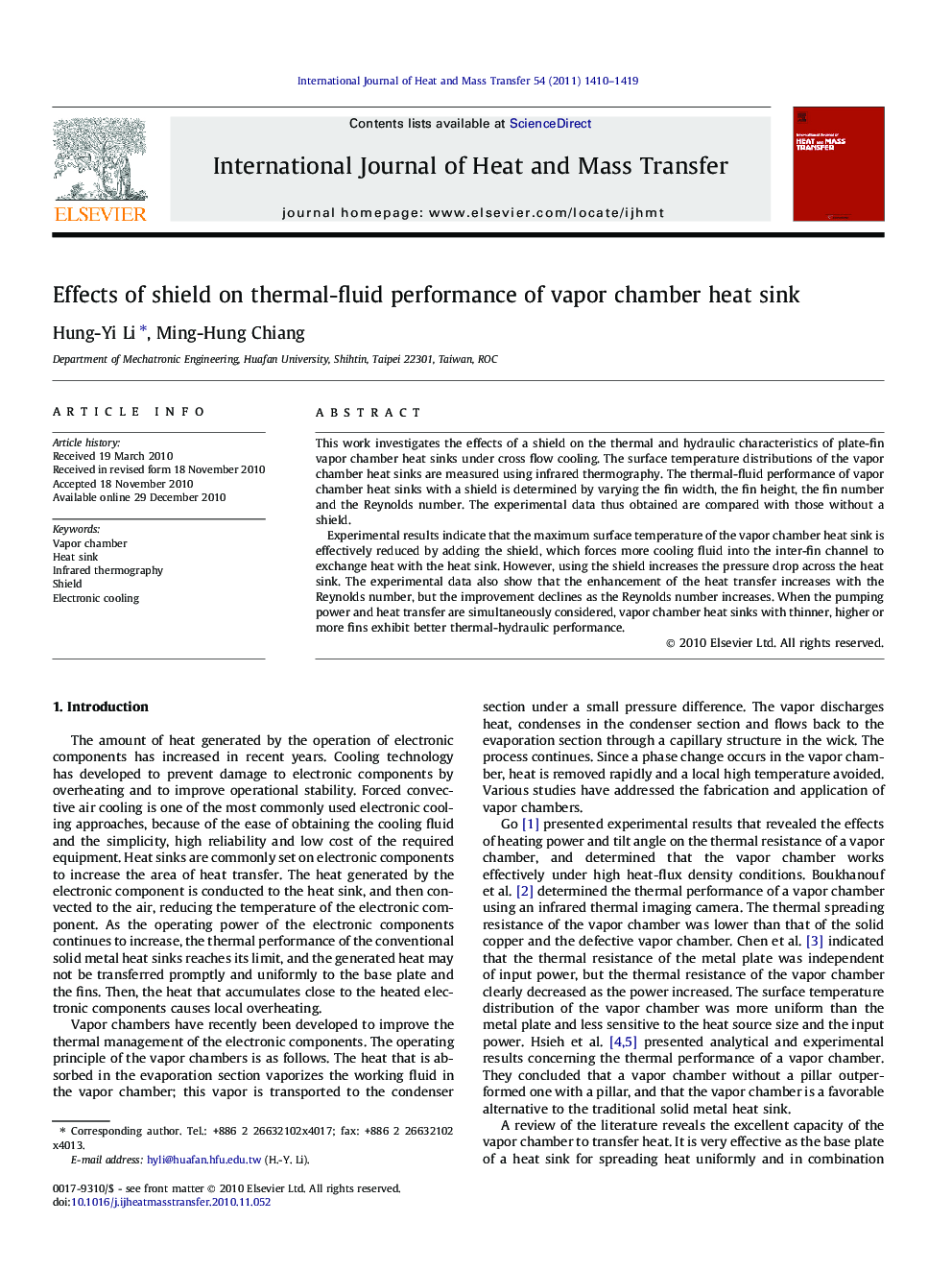| Article ID | Journal | Published Year | Pages | File Type |
|---|---|---|---|---|
| 7059779 | International Journal of Heat and Mass Transfer | 2011 | 10 Pages |
Abstract
Experimental results indicate that the maximum surface temperature of the vapor chamber heat sink is effectively reduced by adding the shield, which forces more cooling fluid into the inter-fin channel to exchange heat with the heat sink. However, using the shield increases the pressure drop across the heat sink. The experimental data also show that the enhancement of the heat transfer increases with the Reynolds number, but the improvement declines as the Reynolds number increases. When the pumping power and heat transfer are simultaneously considered, vapor chamber heat sinks with thinner, higher or more fins exhibit better thermal-hydraulic performance.
Related Topics
Physical Sciences and Engineering
Chemical Engineering
Fluid Flow and Transfer Processes
Authors
Hung-Yi Li, Ming-Hung Chiang,
